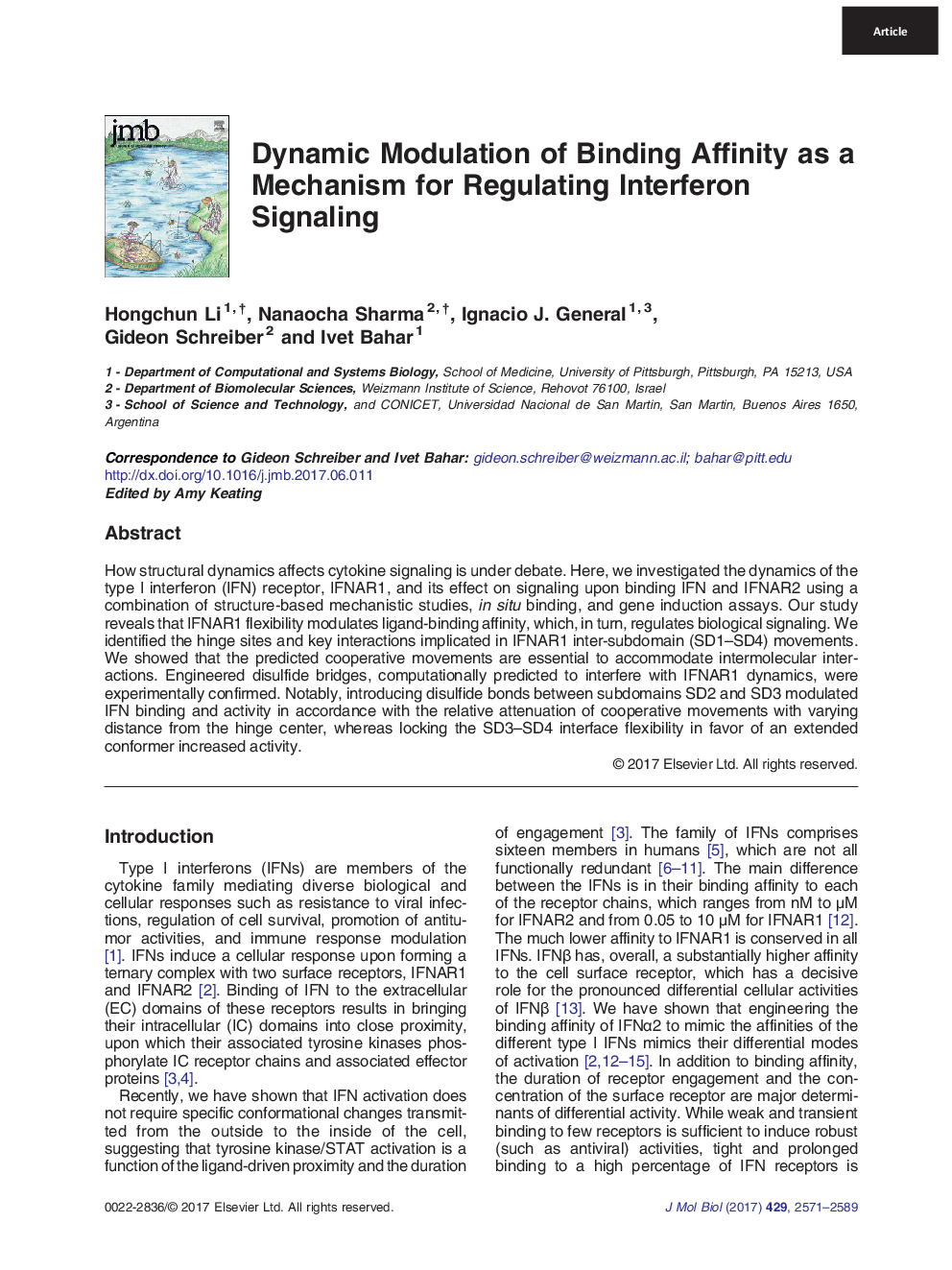| Article ID | Journal | Published Year | Pages | File Type |
|---|---|---|---|---|
| 5532961 | Journal of Molecular Biology | 2017 | 19 Pages |
â¢IFN-mediated receptor dimerization of IFNAR1 and IFNAR2 dictates signaling.â¢The inherent flexibility of IFNAR1 enables it to probe multiple conformations.â¢Restricting IFNAR1 conformational space affects its IFN binding and activity.â¢Dynamic modulation serves as a mechanism for regulating cytokine signaling.
How structural dynamics affects cytokine signaling is under debate. Here, we investigated the dynamics of the type I interferon (IFN) receptor, IFNAR1, and its effect on signaling upon binding IFN and IFNAR2 using a combination of structure-based mechanistic studies, in situ binding, and gene induction assays. Our study reveals that IFNAR1 flexibility modulates ligand-binding affinity, which, in turn, regulates biological signaling. We identified the hinge sites and key interactions implicated in IFNAR1 inter-subdomain (SD1-SD4) movements. We showed that the predicted cooperative movements are essential to accommodate intermolecular interactions. Engineered disulfide bridges, computationally predicted to interfere with IFNAR1 dynamics, were experimentally confirmed. Notably, introducing disulfide bonds between subdomains SD2 and SD3 modulated IFN binding and activity in accordance with the relative attenuation of cooperative movements with varying distance from the hinge center, whereas locking the SD3-SD4 interface flexibility in favor of an extended conformer increased activity.
Graphical AbstractDownload high-res image (259KB)Download full-size image
